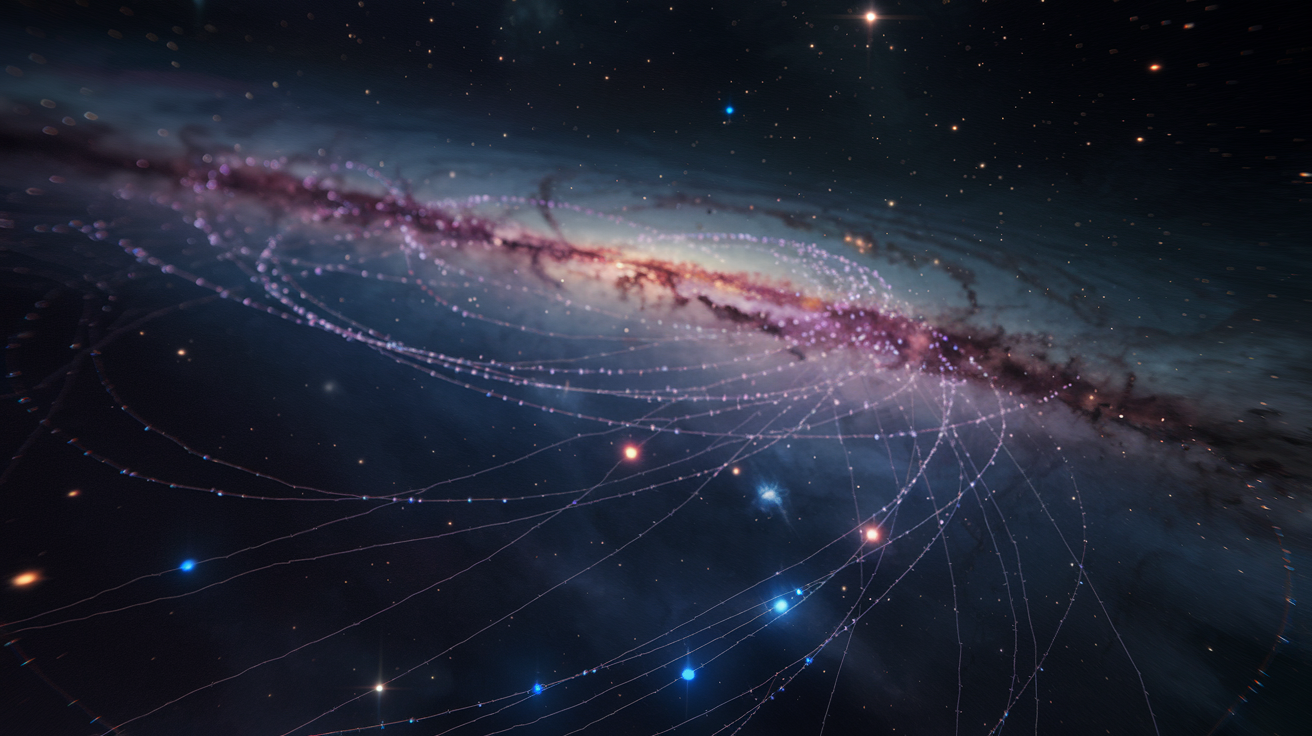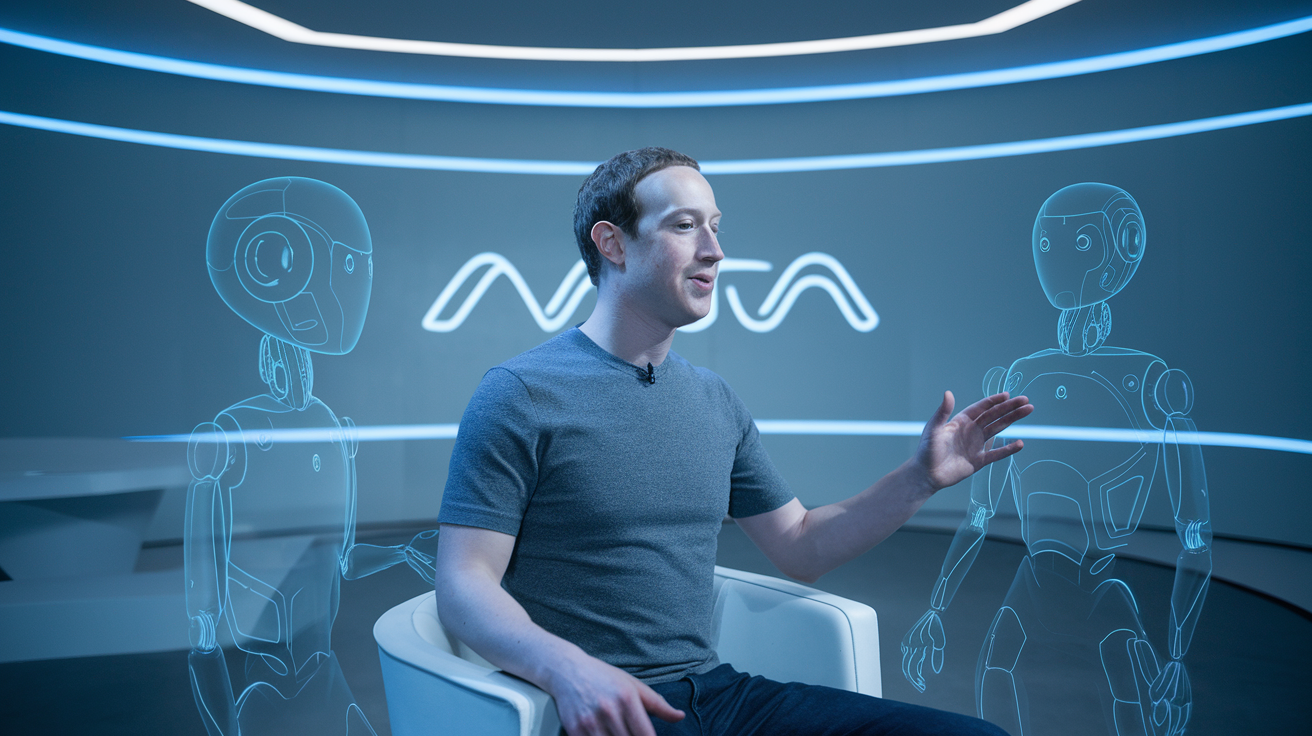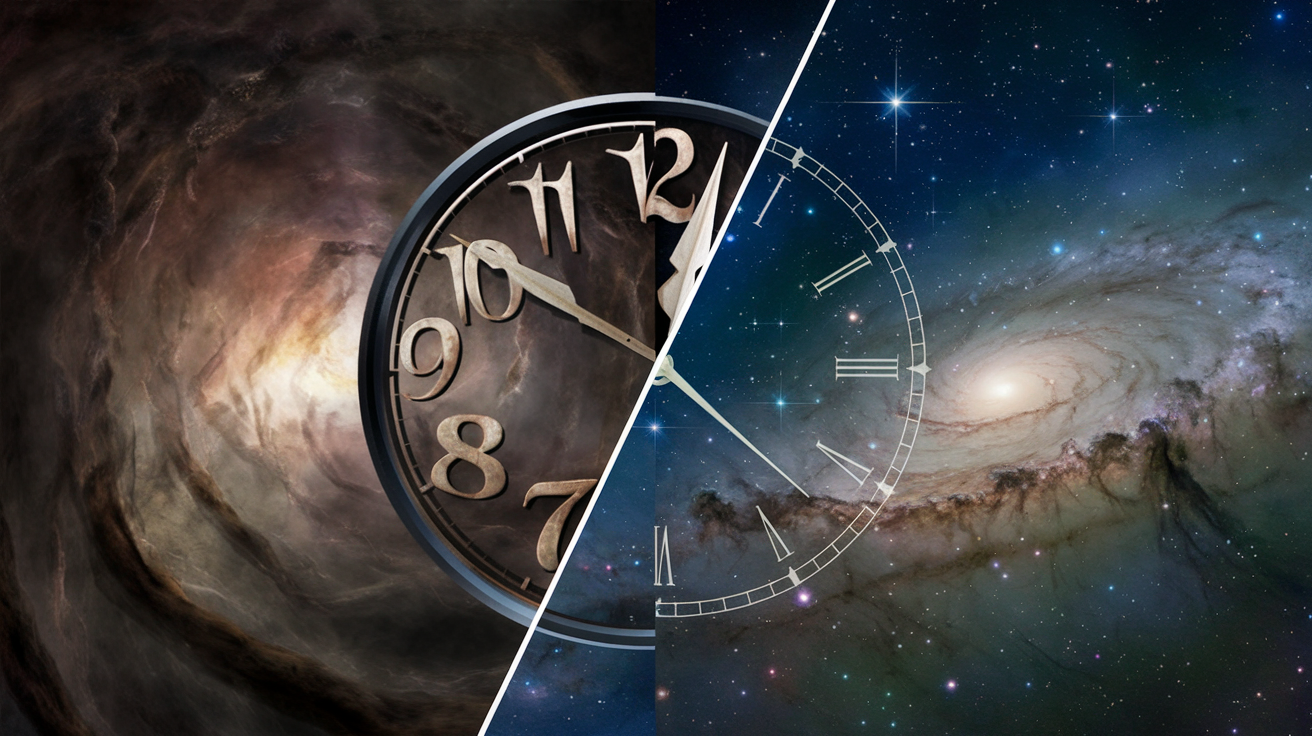
Time is relative, as Einstein famously declared. But what if this relativity isn’t just a matter of physics textbooks, but a key to unlocking the mysteries of our universe? Recent observations of 1,550 supernovae have sparked a cosmic showdown between our understanding of time zones and the enigmatic force known as dark energy.
The “timescape model”, a groundbreaking cosmological theory, challenges everything we thought we knew about the universe’s expansion. While dark energy has long been the go-to explanation for this acceleration, inconsistencies in recent data have scientists scratching their heads. 🤔 Could our assumptions about a uniform universe be fundamentally flawed?
Prepare to have your mind blown as we dive into the impact of cosmic structures on time perception, explore the implications for our cosmological understanding, and witness the ultimate face-off between time zones and dark energy. Buckle up, stargazers – this cosmic journey might just change the way you view the universe forever!
The Timescape Model: A New Cosmological Theory
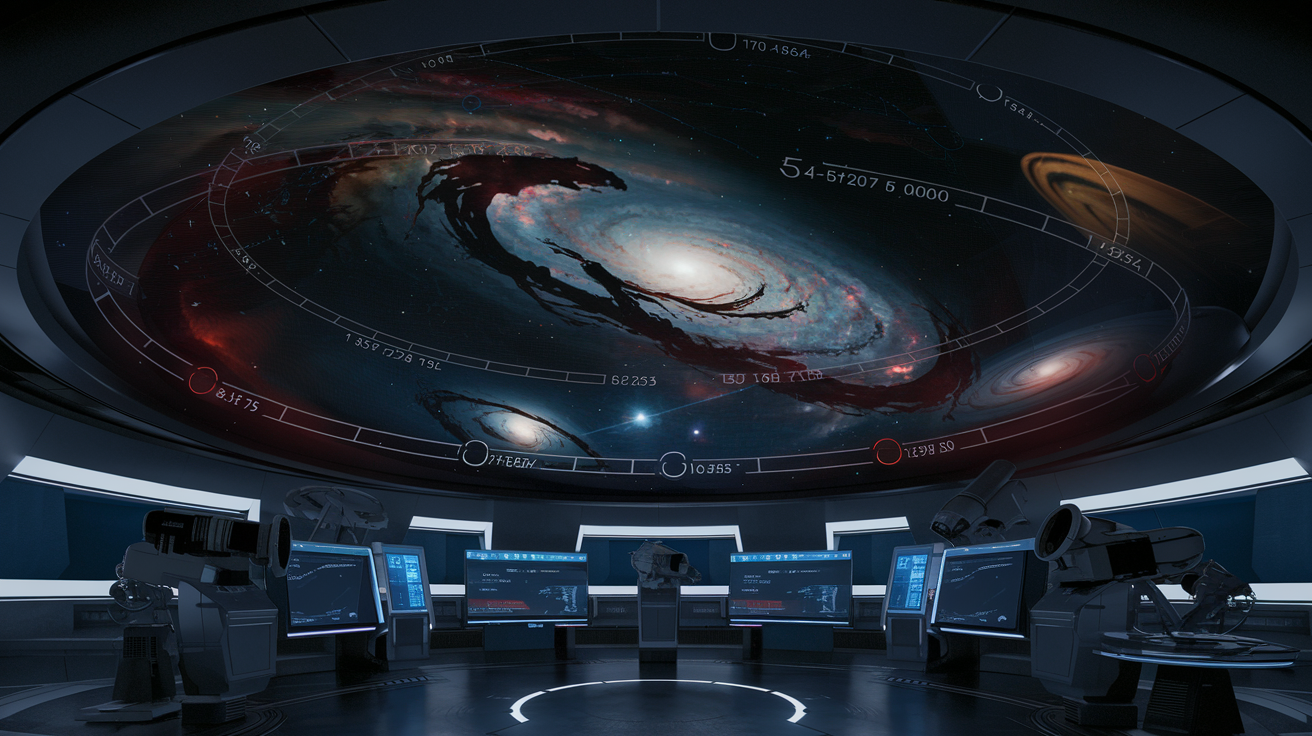
Non-uniform universe concept
The Timescape Model challenges the traditional view of a uniform universe, proposing instead a cosmos with varying densities and structures. This non-uniformity affects how time flows across different regions, creating a complex tapestry of cosmic time zones.
| Concept | Traditional Model | Timescape Model |
|---|---|---|
| Universe | Uniform | Non-uniform |
| Time Flow | Consistent | Variable |
| Structures | Negligible impact | Significant influence |
Influence of cosmic structures on time
Cosmic structures play a crucial role in the Timescape Model:
- Galaxies and galaxy clusters
- Voids and filaments
- Dark matter distributions
These structures distort spacetime, causing time to flow differently in various cosmic regions. This variation in time passage could explain observed cosmic expansion without invoking dark energy.
Impact of Cosmic Structures on Time Perception
A. Density-dependent time rates
In Einstein’s general relativity, time is not absolute but influenced by gravitational contexts. This leads to density-dependent time rates across the cosmos:
| Cosmic Structure | Time Rate |
|---|---|
| Dense Areas | Slower |
| Voids | Faster |
B. Age discrepancies between dense areas and voids
These varying time rates result in age discrepancies between different cosmic regions. Dense areas appear younger, while voids seem older, challenging our understanding of universal age.
C. Illusion of universal acceleration
The interplay of density-dependent time rates creates an illusion of universal acceleration, potentially explaining observations without invoking dark energy. This insight paves the way for exploring implications on our cosmological understanding.
Implications for Cosmological Understanding

A. Incorporation of general relativity complexities
Now that we’ve explored the impact of cosmic structures on time perception, we must consider how general relativity’s complexities are incorporated into our cosmological understanding. Cosmic time, a crucial concept in Big Bang models, addresses relativity issues by providing a time coordinate within general relativity’s solutions. This framework allows for a unique time reference in an expanding universe, treating all coordinate points equally.
B. Addressing discrepancies in astronomical observations
| Concept | Description |
|---|---|
| Lookback Time | Age difference between current universe and light emission from distant objects |
| Redshift | Time-like parameter in astronomical observations |
| Universe Age | Estimated at 13.8 billion years, subject to model dependence |
With this understanding of cosmic time, we can better address discrepancies in astronomical observations. The interconnection between lookback time, redshift, and the age of the universe helps create a cohesive temporal measurement system in the expanding universe. Next, we’ll explore how these implications challenge the concept of dark energy.
The Challenge to Dark Energy
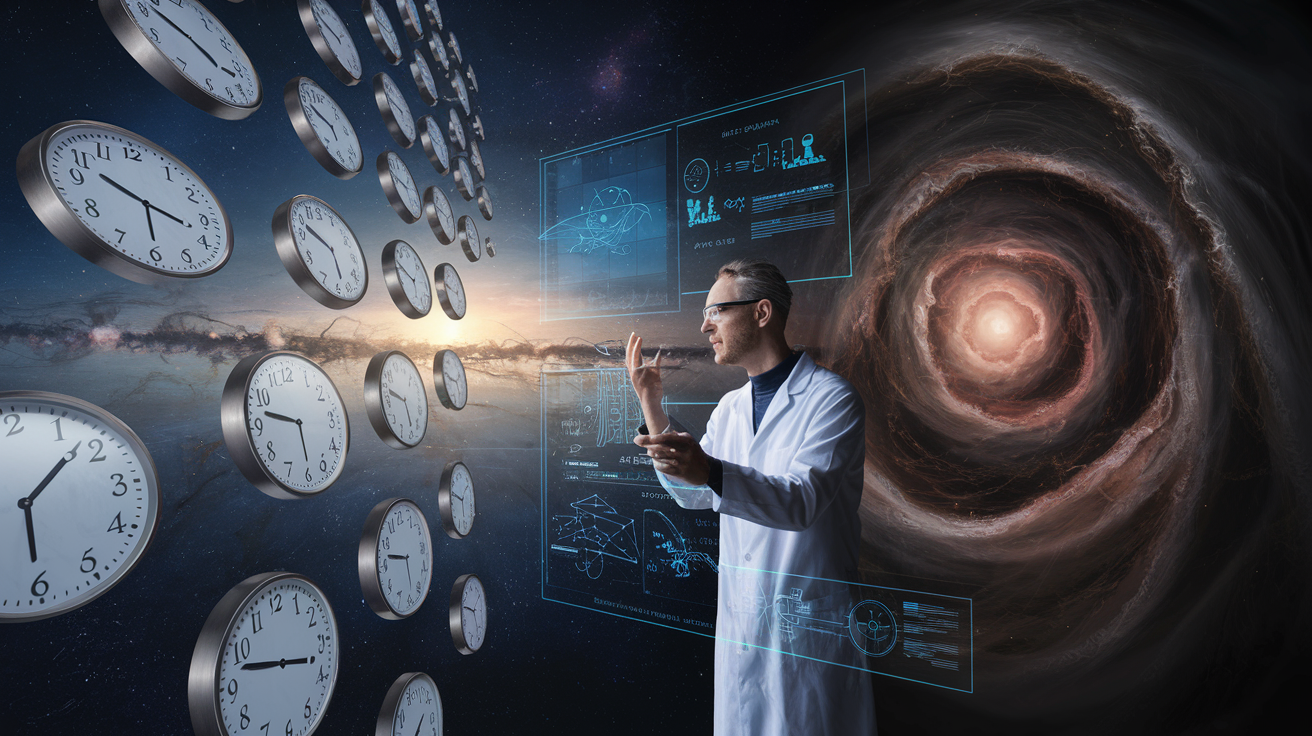
Recent supernovae observations
Recent findings from the Dark Energy Spectroscopic Instrument (DESI) are challenging our understanding of dark energy. Observations of ancient, distant galaxies suggest that dark energy may not be constant as previously thought. This has sparked both excitement and confusion in the scientific community, as it could significantly impact existing cosmological models.
Inconsistencies in the dark energy model
| Aspect | Previous Understanding | New Observations |
|---|---|---|
| Dark Energy | Constant force | May change or weaken over time |
| Cosmic Expansion | Predictable | Aligns with Einstein’s general relativity |
| Universe’s Fate | Predetermined | Uncertain, pending further research |
These inconsistencies highlight the need for reevaluating foundational assumptions in cosmology.

The timescape model presents a compelling challenge to our understanding of dark energy and the expansion of the universe. By considering the impact of cosmic structures on time perception, this new theory offers a fresh perspective on the apparent acceleration of cosmic expansion. It highlights the importance of accounting for the non-uniform nature of the universe and the complexities of general relativity in our cosmological models.
Conclusion: As astronomers continue to gather more precise measurements and extensive data from distant cosmic objects, our understanding of the universe’s fundamental nature evolves. The timescape model serves as a reminder that even well-established theories can be subject to reevaluation in light of new evidence. Moving forward, it will be crucial for the scientific community to remain open to alternative explanations and continue refining our cosmological models to better align with observed phenomena.
LATEST
-
Students Cry Foul As Professor Trades Textbooks For ChatGPT
Imagine shelling out $8,000 for a college course, only to find out your professor…
-
Dark Matter Formation: Speed, Mass, and the Universe’s Secrets
What if everything we thought we knew about dark matter was wrong? While scientists…
-
Russia-Ukraine Peace Negotiations First time ever in 2025
In a historic diplomatic development, direct peace talks between Russia and Ukraine have begun…


